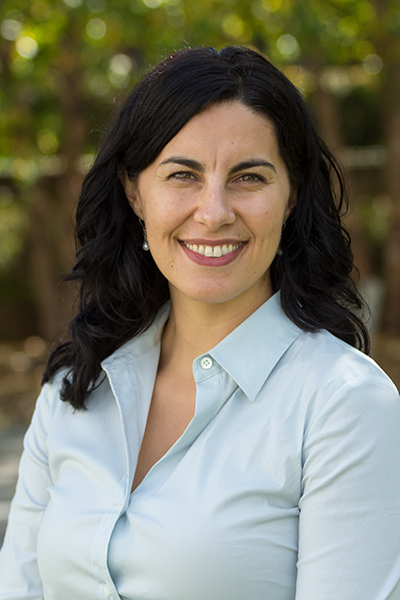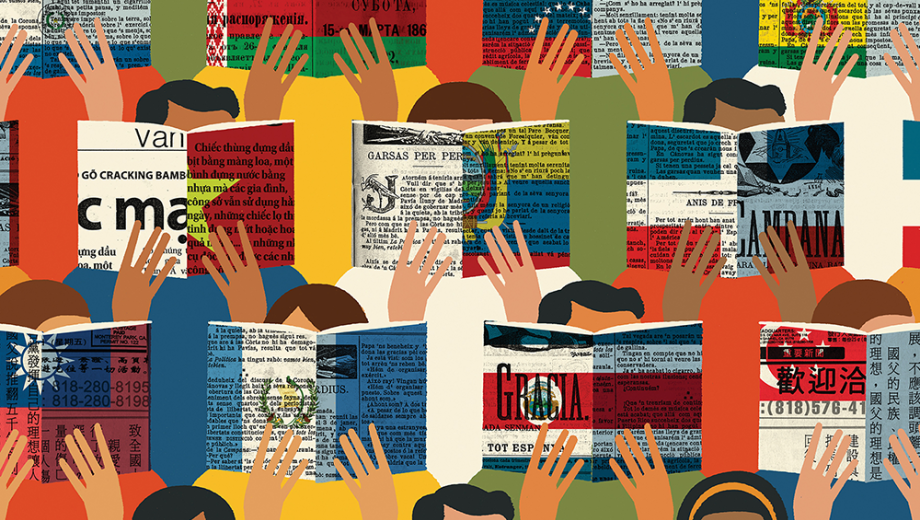Translation is often the closest way to read a text. Two scholars discuss the process, its pitfalls, and ultimately its payoffs.
 Jason Grunebaum is senior lecturer in the Department of South Asian Languages and Civilizations (SALC). He has translated two books by novelist Uday Prakash from Hindi into English.
Jason Grunebaum is senior lecturer in the Department of South Asian Languages and Civilizations (SALC). He has translated two books by novelist Uday Prakash from Hindi into English.
A lot of stories in the world of literary translation start with accidents. The particular happy accident that led to my current project was New York Magazine running a feature in 2007 about the world’s best untranslated novels. When they contacted me for a suggestion, [SALC professor] Ulrike Stark mentioned The Tale of the Missing Man by Manzoor Ahtesham. I looked at it, loved it, and after I recommended it to the magazine, we said we should start translating it together. [Editor’s note: Grunebaum and Stark’s translation, expected in 2018 from Northwestern University Press, won Northwestern’s inaugural Global Humanities Translation Prize in April.]
We have a funny relationship to translation in the Anglophone world. There are two ideas out there that are totally incompatible with one another: One is that translation is just a mechanical process of moving one set of signs from a stable system to another set of signs with a stable system. The other one is that it’s impossible.
A translation can’t be a carbon copy, obviously. It’s a new original work. The ideal would be, for example, if we took the Japanese writer Haruki Murakami—who has been translated into pretty much every language—and got people together who read the Italian, the French, the Chinese, and the English versions of his novel Kafka on the Shore, they all would feel like they had read the same book. But each translation remains its own original work.
The goal is to be able to hear in my ear what that author might sound like in English. It’s very much a question of voice. With Uday, I feel fairly confident that at least I can hear one version of what he might sound like in English. That’s the beauty of translation; there are infinite possibilities. Like jazz improvisation. Or the way Glenn Gould playing Bach versus somebody else who might bring out different aspects of the work or the composition.
In the classroom, once we get to second-year Hindi, we discuss translation a lot. One of my and the students’ favorite units is to look at nine different translations of a famous Urdu short story called “Toba Tek Singh,” by Saadat Hasan Manto. It imagines, after partition, the exchange of inmates from mental asylums. It’s a great story, and there are many different translations. We read the story and closely examine the different translations. This opens up extremely productive discussions about both languages, meaning in Hindi, meaning in English, different translation challenges and strategies, and cultural recontextualization.
 Larissa Brewer-García is assistant professor in the Department of Romance Languages and Literatures. Her book in progress, “Beyond Blackness: Translation and the Making of Blackness in Colonial Spanish America,” focuses on black interpreters in sixteenth- and seventeenth-century South America.
Larissa Brewer-García is assistant professor in the Department of Romance Languages and Literatures. Her book in progress, “Beyond Blackness: Translation and the Making of Blackness in Colonial Spanish America,” focuses on black interpreters in sixteenth- and seventeenth-century South America.
There is an incredible Jesuit treatise about how to use translation to evangelize black men and women in the early transatlantic slave trade to Spanish America. I was struck by the statement it makes, that the entire project depends on finding the right interpreters—who happened to be other slaves. At that time there were more than 50 different languages being spoken in the Caribbean slave port of Cartagena de Indias, in modern-day Colombia.
Some fundamental concepts of Christianity might be difficult to translate to non-Christians, but what’s curious about the Jesuits’ writing is that they in no way want to convey that translation is impossible in such a context because it also would suggest that their evangelical project could come to an impasse. So they use an Augustinian notion of the universal sign that is God to justify using chains of enslaved interpreters to evangelize groups of newly arrived slaves.
These translation strategies were very different from those used for New World natives at the same time. For example, it was decided early on that missionaries should not translate “God” into native languages, but instead import the Spanish term “Dios.” Because using a native word might evoke or reinforce notions of a “wrong” kind of religiosity—“a god” instead of “the God”—you have to say, “there’s this divinity who’s a father whose name you will now know as Dios.” No such rules were made regarding how African interpreters should translate Christian concepts to black populations. As a result, African interpreters generally had more control over the messages they translated than other New World intermediaries.
African interpreters were able to parlay this special influence into shaping certain documents about black men and women during the period. I found that texts produced in collaboration with African interpreters use a unique notion of blackness that’s entirely positive. People of African descent are not described as “black but beautiful,” as stated in the Song of Songs, but rather black, radiant, and beautiful. With this, I see the interpreters appropriating some Christian language about light to present blackness in a new way—changing it from question of pigment associated with enslavement, sin, or bad luck to one associated with brilliance and beauty.
I’ve also started a new translation project about writings about black saints in seventeenth-century Spanish America. For this project, I am translating a collection of early hagiographies composed in Spanish into English.
Translation is important for making works like these accessible to a wider audience interested in the African diaspora who can’t read Spanish.

